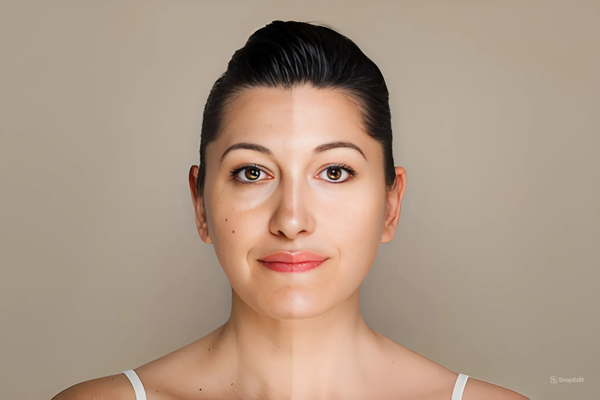Cryonics and Longevity: A Journey Beyond Death
This story explores the concept of cryonics, where bodies are frozen with the hope of future revival. It critically examines the scientific challenges, ethical dilemmas, and the psychological appeal of defying death through cryopreservation.

On a cold winter night in 1967, James Bedford, a psychology professor, became the first man to be frozen in time. His body, preserved at subzero temperatures, was laid in a steel chamber filled with liquid nitrogen, awaiting a future where medical science might bring him back to life. At that moment, Bedford crossed a boundary no human had crossed before—into the uncertain world of cryonics.
The idea behind cryonics is deceptively simple: freeze the human body after death, preserving it in a near-perfect state, and wait. Wait for science to catch up. Wait for the cures to diseases that ravaged the body, for technology that could repair damaged cells, for a world where death is no longer the final end. Yet, as Bedford’s lifeless form settled into its icy slumber, the reality was far from simple. More than half a century later, his body still lies frozen, along with a growing number of others, hoping to one day wake from what might be the longest sleep in human history.
The Frozen Frontier
At a facility tucked away in Scottsdale, Arizona, the future of human life stands still. Inside towering tanks filled with liquid nitrogen, dozens of bodies and brains are suspended in a state of deep freeze. They belong to people who, like Bedford, placed their faith in cryonics—the radical hope that one day, long after their hearts had stopped beating, they might be revived to live again.
The process begins at the moment death is declared. Cryonics technicians race to cool the body as quickly as possible to prevent the brain from deteriorating. Blood is drained and replaced with cryoprotectants—chemicals designed to prevent the formation of ice crystals that could shred cells from the inside out. Then, the body is placed into storage at temperatures colder than -196°C, where it will remain, in theory, until science finds a way to revive it.
But will that day ever come?
Science and Skepticism
For all its allure, cryonics rests on a fragile foundation of what might be. The current state of cryonics technology leaves many questions unanswered. While bodies can be frozen and preserved with relative success, the biggest challenge lies in the thawing. Ice crystals, despite the best efforts to prevent them, can still form in delicate tissues, damaging cells beyond repair. The brain, in particular, with its intricate network of neurons and synapses, is susceptible to such harm. Even if future doctors manage to fix the body, will the mind—complete with memories, emotions, and personality—be intact?
Scientists remain divided. To Dr. Christine Peterson, a leading futurist, cryonics represents a bridge between life and death.
“We’re not saying revival will happen tomorrow,” she says. “We’re saying we’re preserving a chance—just a chance—for life to continue.”
Others, like neuroscientist Dr. Michael Hendricks, are more skeptical.
“We can freeze the structure of the brain,” he says, “but reviving the mind is something else entirely. The very thing that makes us who we are—our thoughts, our memories—could be lost.”
For now, the dream of reviving a frozen human being remains out of reach. But that doesn’t stop the growing number of people willing to take the gamble, hoping for a technological breakthrough that might restore them to the world centuries or even millennia from now.
The Ethical Iceberg
Even if the science catches up, there are ethical and philosophical icebergs hidden beneath the surface. What happens when a person from the past is suddenly revived in the distant future? Will they still be the same person, legally, spiritually, and emotionally? Will they be able to reclaim their place in society, or will they be strangers in a world that no longer resembles the one they knew?
For some, the notion of reviving a body without being able to fully restore the mind is deeply unsettling. Imagine waking up one day, not recognizing your surroundings or even your own identity. Imagine the disorientation of being reborn into a world where everyone you once knew is long gone, where history has marched on without you.
There’s also the issue of accessibility. Cryonics, at its core, is an expensive endeavor, with full-body preservation costing upwards of $200,000. It’s a luxury that only a select few can afford. As cryonics grows, so too does the question of whether it’s ethical to invest in the potential future lives of a few, while millions today still suffer from preventable diseases.
A Gamble on Tomorrow
For many, cryonics is not about guarantees but about possibilities. The uncertainty of death is replaced with the uncertainty of preservation. As Dr. Ralph Merkle, a prominent advocate for cryonics, puts it:
“It’s better to take a bet on an uncertain future than to resign yourself to the certainty of death.”
This gamble is evident in the growing numbers of cryopreserved bodies and brains in storage at facilities like Alcor and the Cryonics Institute. These individuals have made their choice, opting to lie in wait, perhaps for centuries, in the hope that medical science will one day catch up with their dream.
And yet, despite the vast unknowns, cryonics continues to captivate those who fear death more than the potential consequences of a future they cannot predict. For them, cryopreservation is a final act of defiance—a refusal to accept the limitations of the present. It is, in a sense, the ultimate act of hope.
A Future Frozen in Time
The promise of cryonics is not just about freezing bodies; it’s about freezing time itself. It offers a tantalizing vision of a future where death is no longer inevitable, where human life might stretch far beyond its natural limits, and where today’s incurable diseases will be distant memories.
But for now, that future remains suspended, much like the bodies lying in cryonic tanks across the world. As the cold mist rises from the liquid nitrogen, one can’t help but wonder: Will they ever wake up? Will humanity ever unlock the secrets of life and death, or will these frozen dreamers remain lost in time, a testament to our endless desire to conquer mortality?
Only time will tell. And for those who have placed their faith in cryonics, time is all they have left.





